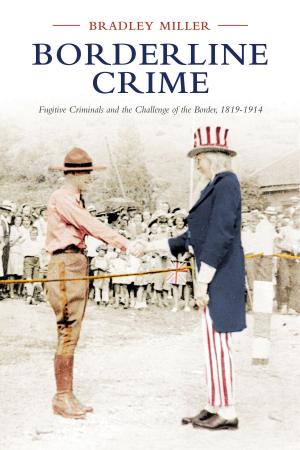Gompers in Canada
A Study in American Continentalism Before the First World War
Nonfiction, History, Canada, Modern, 20th Century| Author: | Robert Babcock | ISBN: | 9781442633131 |
| Publisher: | University of Toronto Press, Scholarly Publishing Division | Publication: | December 15, 1974 |
| Imprint: | Language: | English |
| Author: | Robert Babcock |
| ISBN: | 9781442633131 |
| Publisher: | University of Toronto Press, Scholarly Publishing Division |
| Publication: | December 15, 1974 |
| Imprint: | |
| Language: | English |
Samuel Gompers, the charismatic chief of the American Federation of Labor at the turn of the century, claimed to represent the interests of all workers in North America, but it was not until American corporations began to export jobs to Canada via branch plants that he became concerned with representing Canadian workers. Within a very short time the Canadian labour movement was rationalized into a segment of the American craft-union empire. In order to secure the loyalty of these new recruits, the AFI reduced the national trade-union centre of Canada, the Trades and Labor Congress, to the level of an American state federation of labour.
But Gombers failed to perceive the different political, historical, and cultural climates north of the forty-ninth parallel, and his policies inevitably generated friction. Although some Canadian workers felt sympathy for labour politicians inspired by left-wing doctrines and the social gospel movement, Gompers strove to keep Canadian socialists at bay. And although Canadian workers expressed considerable interest in governmental investigation of industrial disputes, Gompers remained inimical to such moves. Canadian labour groups desired a seat on international labour bodies, but Gompers would not allow them to speak through their own delegate. Canadian unions deemed rivals to AFL affiliates were banished. Dues were siphoned off into union treasuries in the US, and American labour leaders kept firm control over organizing efforts in Canada. Perhaps most importance, the AFL’s actions at the TLC convention of 1902—its opposition to dual unionism—helped spawn a separate labour movement in Quebec.
Yet by 1914, following nearly two decades of effort by Gompers, many Canadian workers had become his willing subjects. Though others struggled to loosen Gompers’ grip on the Canadian labour movement, Canadian trade unions appeared firmly wedded to the AFL’s continentalism.
The story of Gompers in Canada has never been properly treated: this book is a significant addition to Canadian and American labour history and to the study of American expansion. Based upon exhaustive research in the Gompers papers, the AFL-CIO archives, and in various Canadian manuscript and newspaper sources, it clearly reveals one importance aspect of the growth of American’s ‘informal’ empire at the turn of the century.
Samuel Gompers, the charismatic chief of the American Federation of Labor at the turn of the century, claimed to represent the interests of all workers in North America, but it was not until American corporations began to export jobs to Canada via branch plants that he became concerned with representing Canadian workers. Within a very short time the Canadian labour movement was rationalized into a segment of the American craft-union empire. In order to secure the loyalty of these new recruits, the AFI reduced the national trade-union centre of Canada, the Trades and Labor Congress, to the level of an American state federation of labour.
But Gombers failed to perceive the different political, historical, and cultural climates north of the forty-ninth parallel, and his policies inevitably generated friction. Although some Canadian workers felt sympathy for labour politicians inspired by left-wing doctrines and the social gospel movement, Gompers strove to keep Canadian socialists at bay. And although Canadian workers expressed considerable interest in governmental investigation of industrial disputes, Gompers remained inimical to such moves. Canadian labour groups desired a seat on international labour bodies, but Gompers would not allow them to speak through their own delegate. Canadian unions deemed rivals to AFL affiliates were banished. Dues were siphoned off into union treasuries in the US, and American labour leaders kept firm control over organizing efforts in Canada. Perhaps most importance, the AFL’s actions at the TLC convention of 1902—its opposition to dual unionism—helped spawn a separate labour movement in Quebec.
Yet by 1914, following nearly two decades of effort by Gompers, many Canadian workers had become his willing subjects. Though others struggled to loosen Gompers’ grip on the Canadian labour movement, Canadian trade unions appeared firmly wedded to the AFL’s continentalism.
The story of Gompers in Canada has never been properly treated: this book is a significant addition to Canadian and American labour history and to the study of American expansion. Based upon exhaustive research in the Gompers papers, the AFL-CIO archives, and in various Canadian manuscript and newspaper sources, it clearly reveals one importance aspect of the growth of American’s ‘informal’ empire at the turn of the century.















